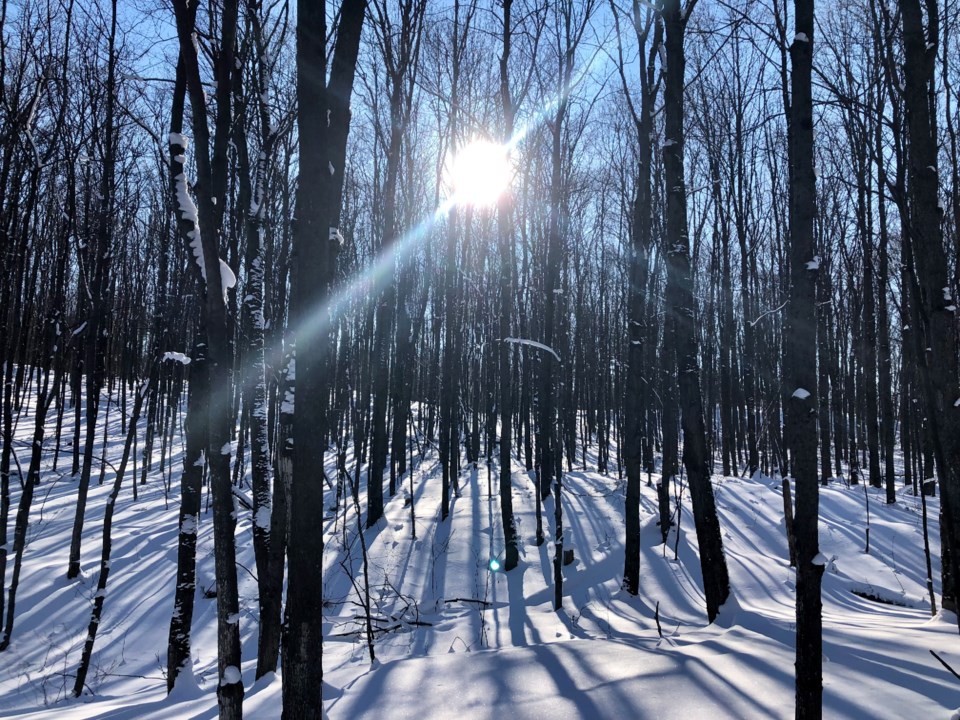The Friends of Simcoe County Forests is not giving up just yet.
The local group hopes to challenge an Ontario Land Tribunal decision from earlier this year that granted the development of a waste facility on a forest tract in Springwater Township.
Backed by nonprofit Canadian Environmental Law Association, the Friends argue the project sets a dangerous precedent for properties with natural heritage features.
At issue is a section of the Simcoe County Forest in Springwater Township that the County of Simcoe wants to develop into what it calls an Environmental Resource Recovery Centre (ERRC).
Friends of Simcoe County Forests has asked the Ontario Divisional Court for leave to appeal January’s Ontario Land Tribunal decision which gave the county the go-ahead to start work on the project on Horseshoe Valley Road between highways 400 and 27.
The county indicates the Environmental Resource Recovery Centre addresses the “urgent need” to create a local organics processing and materials management facility
A dump, the country stresses in a statement, it is not.
Instead, the county states its intent is to house an organics processing facility to process green cart contents, a materials management facility along with areas for truck servicing, public education and space to potentially sort blue box recycling.
The Freele Tract is a 208-acre section of a contiguous part of the Simcoe County Forest - the province’s largest municipal forest system. It was created in 1948 and planted with red pines which has encouraged reforestation.
“A forest is not a place you should house a waste facility,” said Mary Wagner, president of Friends of Simcoe Forests who also lives next to the site.
The Canadian Environmental Law Association argues the tribunal wrongly interpreted a key provision of A Place to Grow: Growth Plan for the Greater Golden Horseshoe.
Lawyer Jacqueline Wilson said the provincial growth plan identifies the need to protect key natural heritage features such as significant woodlands, wetlands and habitat features. A development, she added, needs to be authorized under an environmental assessment process - which she said hasn’t happened.
“We think this is a really significant precedent that’s being set,” said Wilson. “If the tribunal’s interpretation of what protection is supposed to look like stands, we think it’s really a slippery slope.”
The goal, she added, is to try to direct infrastructure away from natural areas.
Simcoe County’s lawyer, Marshall Green, said the process requires a redesignation under the Official Plan of both the county and Springwater Township and to rezone those lands at the township level. After that, the county will require an environmental compliance certificate and a site plan.
The overall process for the project - that was first proposed in 2010 as part of the county’s waste-management strategy - involved the review of 500 sites, 30 tests and several studies completed.
“She (vice-chair of the tribunal Sharyn Vincent) agreed that there had been a sufficient environmental assessment, but the other side is saying no,” said Green. “That’s what they’re taking to the divisional court.
“We think we’ve done an adequate job, and we’re out there to prove it.”
The county, adds Green, is being supported through this legal challenge by the Ontario Ministry of Municipal Affairs and Housing and the Township of Springwater.
The county indicates its landfills are expected to reach capacity over the next decade, putting pressure on the need to divert waste and move to organics collection and management.
Currently, the county’s organic material is being shipped daily to Elmira, which adds to the cost and the environmental impact. A local facility is expected to save the county about $1.6 million per year in waste transfer and haulage costs and create jobs.
The plan is that the project’s buildings and infrastructure will take up five per cent of the 207-acre Freele Tract, leaving the remainder untouched.



